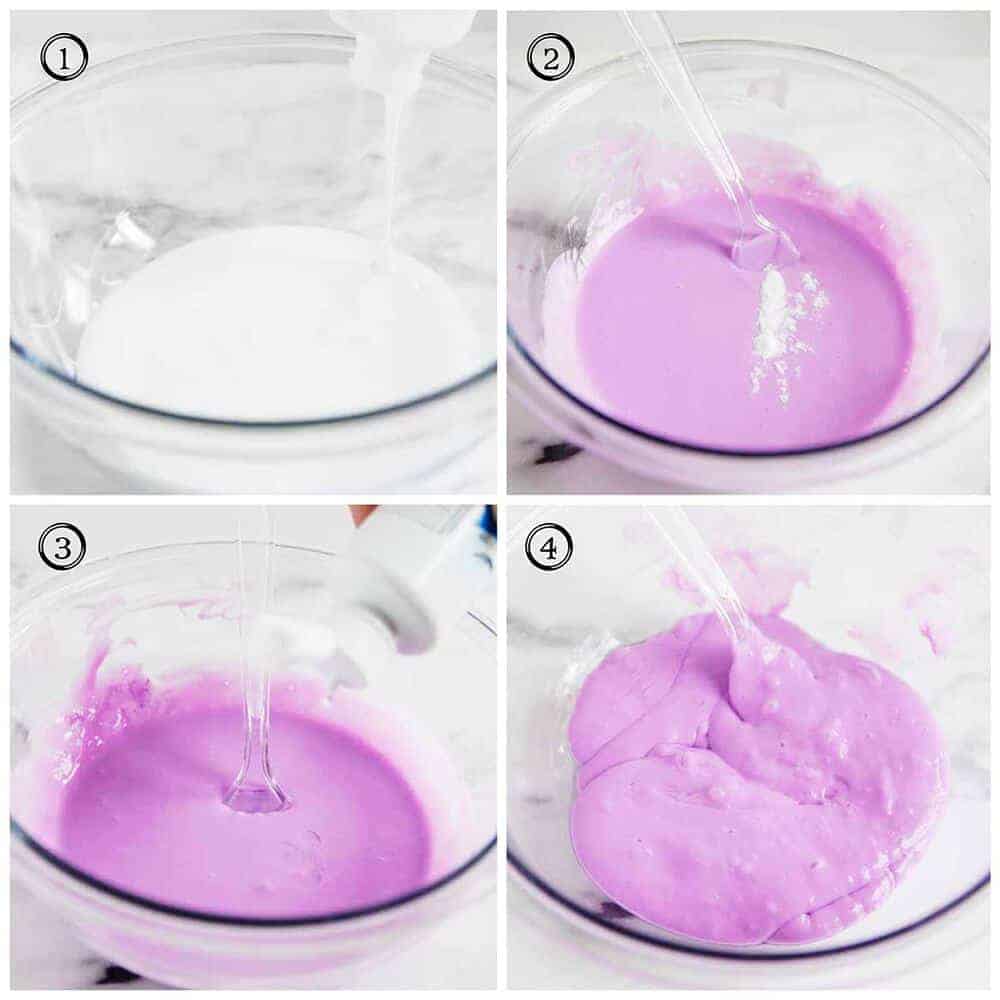The Ultimate Guide to Making Slime: A Slippery Adventure for Parents and Kids Alike!
Hello there, wonderful parents and curious kiddos! Are you ready to dive into the gooey and oozy world of slime-making? I can hear the cheers from here! Making slime at home is not just a fun activity, it’s a brilliant way to combine creativity, science, and sensory play. So, whether it’s a rainy day, a party, or just an ordinary Tuesday, get ready, because we are about to embark on a slime-tastic adventure!
The Slimy Basics: What You Need to Know
Before we get our hands sticky, let’s talk about the ABCs of slime. Slime is a non-Newtonian fluid, which means it doesn’t follow the normal rules of liquid behavior – how cool is that? Depending on the ingredients you use, you can make slime that stretches, bounces, or even changes color!
Mom and Dad’s Safety Note: Safety first, always! Make sure to supervise your little ones during the slime-making process, especially when using borax or any other chemicals. Also, remember that although slime is awesome to play with, it’s not edible, so keep an eye out and ensure it doesn’t go anywhere near mouths.
Gather Your Slime Supplies!
Ready to get started? Here’s what you’ll need for a basic slime recipe:
- Glue: White or clear school glue is the main ingredient. It’s the base that holds your slime together.
- Borax Solution: This is often used as a slime activator. Dissolve 1 teaspoon of borax in 1 cup of warm water to make the solution.
- Food Coloring: Want to make your slime pop? Add a few drops of food coloring! You can also use paint or liquid watercolors.
- Water: Some recipes require water in addition to the borax solution.
- Mixing Bowl: Choose a bowl that’s big enough to mix your ingredients without spilling.
- Stirring Utensil: A spoon or spatula will do the trick for mixing your ingredients together.
- Measuring Cup and Spoons: Accuracy is key, so make sure to measure your ingredients.
- Optional Add-ins: Want to jazz up your slime? Glitter, beads, foam balls, and scented oils are all fun additions!
Simple Slime Recipe: The Classic Slime
Let’s get down to business and create our first batch of homemade slime! This classic recipe is perfect for beginners and is a guaranteed hit with the kids. Here’s how it’s done:
- Pour 1/2 cup of glue into the mixing bowl.
- If you’re using food coloring, paint, or glitter, add it in now and stir it well.
- Add 1/2 cup of water to the bowl and mix thoroughly.
- Now, it’s activator time! Slowly pour in the borax solution bit by bit while stirring continuously. You’ll see the magic happen as the mixture transforms into slime!
- Keep adding activator until the slime begins to pull away from the sides of the bowl and starts sticking to itself.
- Once the slime has formed, it’s time to knead it. Take it out of the bowl and use your hands to work it until it’s no longer sticky.
Voilà! You now have a squishy, stretchy, marvelous batch of slime! This classic recipe is only the beginning, as there are countless variations to explore. In the next section, we’ll delve into other exciting types of slime you can make, such as fluffy slime, glitter slime, and even edible slime. Keep your mixing bowl handy, because the fun is just getting started!
Remember, slime-making is an artistic and sensory experience for your children. It encourages them to use their imaginations, learn about chemistry, and develop fine motor skills. Plus, it’s an excellent way to bond as a family. So, roll up your sleeves, put on your creative caps, and let’s get slimy!
To ensure that every slime session is successful and filled with laughter, we’ve compiled an in-depth guide. You’ll discover a plethora of recipes to try, tips for cleaning up, and ideas for storing your slime creations. So stay tuned, because our guide is designed to make you and your kids slime experts in no time!
By the time you’re done reading our guide, you’ll know all the tips and tricks to making the perfect slime. But keep in mind, the real magic of slime is not just in the making—it’s in the hours of play that come after. That’s where the true adventure awaits!

5 Essential Things Parents Should Know Before Making Slime
Before we dive into the endless sea of fun and slime, there are a few essential pearls of wisdom that every parent should keep in their pocket. Making slime should be both enjoyable and safe, so here’s what you need to know:
1. Knowing Your Ingredients
It’s essential to have a clear understanding of the ingredients used in slime recipes. Many common slime activators, such as borax, can be harmful if not handled correctly. Always opt for child-friendly recipes, and consider alternatives like contact lens solution combined with baking soda if you’re looking for a safer option.
2. Allergy and Skin Sensitivity
Some children may have skin sensitivities or allergies to the ingredients used in slime. Always do a patch test beforehand, and wear gloves if necessary. Additionally, be mindful of the household items that can be added, like shaving cream or laundry detergent, and choose hypoallergenic options if possible.
3. Mess and Cleanup Strategies
Slime can be messy, and that’s part of the fun, but knowing how to clean it up is crucial. Non-toxic and washable materials are your best friends. Have a dedicated space for slime play, and keep cleaning supplies like vinegar (great for dissolving slime) and baking soda handy.
4. Storing Your Slime
Once the slime-making is done, proper storage is key to keeping the fun going. Sealable plastic bags or airtight containers prevent the slime from drying out. Keep your stored slime in a cool, dry place away from direct sunlight to maintain its consistency.
5. Emphasizing Non-edible Nature of Slime
Instill in your children that none of this fun slime is for eating, no matter how tempting it may look. It’s important for kids to understand that even though some slimes smell good or have a fun texture, they contain chemicals and substances that are unsafe for consumption.
Exciting Variations of Slime to Try
Now that we have the basics and important safety tips out of the way, let’s explore some wacky and whimsical variations of slime that will have your kids squealing with delight. Each of these recipes offers a different experience and can be tailored to your child’s interests:
- Fluffy Slime: By adding shaving cream to your recipe, you can create a fluffy cloud-like texture that’s a pleasure to squish.
- Glitter Slime: Mix in glitter or confetti to your basic slime recipe for an enchanting, sparkly effect.
- Magnetic Slime: Incorporate iron oxide powder, and watch your slime move in response to magnets!
- Cornstarch and Water Slime: Combine cornstarch and water for a simple, non-toxic option that demonstrates viscosity changes under pressure.
- Scented Slime: Add a drop or two of child-safe essential oils or extract, like vanilla, for a slime that smells as good as it feels.
By now, you might be feeling like a slime aficionado, and that’s fantastic! As you prepare to dive into this squishy world, remember that experimentation is part of the fun. Encourage your kids to play slime scientist, mixing and matching ingredients to create their concoction. The possibilities are endless, and the discoveries are part of the joy.
As you make wonderful, wobbly creations, don’t forget to capture memories. A photo of you and your kids with hands immersed in slime is priceless and sure to evoke smiles and stories for years to come. So, let the slime games begin, and may your family’s creativity flow as freely as the slime itself!
. For more information see here
Disclaimer
The articles available via our website provide general information only and we strongly urge readers to exercise caution and conduct their own thorough research and fact-checking. The information presented should not be taken as absolute truth, and, to the maximum extent permitted by law, we will not be held liable for any inaccuracies or errors in the content. It is essential for individuals to independently verify and validate the information before making any decisions or taking any actions based on the articles.




